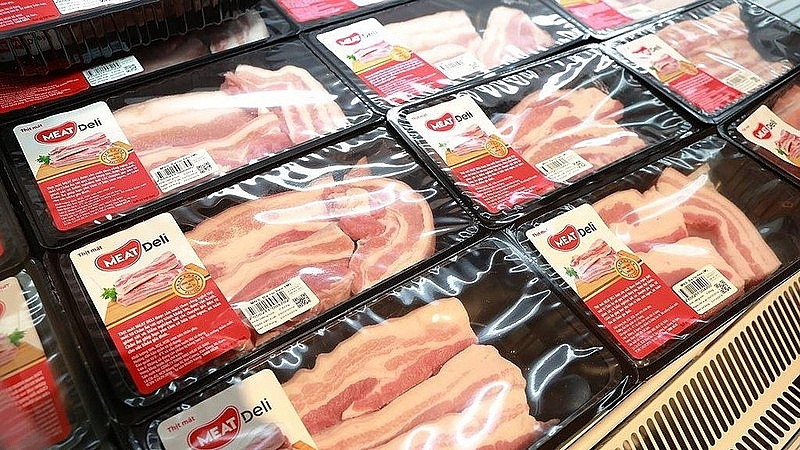Masan MeatLife yet to live up to IPO expectations
 |
| Masan MeatLife officially debuted on the securities market on December 9 |
The day officially saw 323.3 million MML stocks worth VND26 trillion ($1.13 billion) launched on the UpCoM at VND80,000 ($3.48) per stock.
However, after the first session, the stock fell by 12.6 per cent or VND10,000 ($0.43) in price, hence MML's market capitalisation shrank by nearly VND3.3 trillion ($143.48 million) to $976 million.
Two years ago, VN Consumer Meat II Pte., Ltd. purchased 7.5 per cent of Masan MeatLife for $150 million. The stock price at the time was VND210,000 ($9.13), equalling $2 billion in capitalisation.
At the time of launching on the securities market, the company gave wind to ambitions of conquering the local meat market the way Vinamilk has been dominating the milk segment. Masan MeatLife currently has 10 factories with the annual capacity of 3 million tonnes. Moreover, the Masan subsidiary also developed a distribution system of more than 4,500 dealers across the country.
According to data published by Masan Group, the company’s net revenue and pre-tax profit in 2017 were nearly VND18.7 trillion ($813 million) and VND956 billion ($41.57 million). One year later, revenue and pre-tax profit fell to VND14 trillion ($608.7 million) and VND336 billion ($14.6 million), down 25 and 65 per cent, respectively.
In recent years, the local pork market has been constantly facing vicissitudes, especially in 2016-2017 when pork demand in China saw a sharp fall, causing prices to drop to VND22,000 ($0.95) in Vietnam. In 2018, as soon as the market showed signa of recovery, the African swine fever was detected in 55 provinces across the country, which has resulted in increasing pork imports in the first half of 2019.
Despite the many storms, Masan remains firm in its belief that the pork market is fertile ground for firms. According to Masan’s assessment, total annual pork consumption reaches $10.2 billion, with 99 per cent contributed by unauthenticated and unsafe products. Most products are being offered at traditional markets where hygiene and food preservation are poor.
What the stars mean:
★ Poor ★ ★ Promising ★★★ Good ★★★★ Very good ★★★★★ Exceptional
 Tag:
Tag:
Related Contents
Latest News
More News
- Businesses ramp up production as year-end orders surge (December 30, 2025 | 10:05)
- Vietjet chairwoman awarded Labour Hero title (December 29, 2025 | 13:06)
- How to unlock ESG value through green innovation (December 29, 2025 | 10:03)
- AI reshapes media and advertising industry (December 29, 2025 | 08:33)
- FPT and GELEX sign deal to develop blockchain tech for global markets (December 29, 2025 | 08:29)
- Vietnam’s GDP forecast to grow by 9 per cent in 2026 (December 29, 2025 | 08:29)
- Women entrepreneurs are key to Vietnam’s economic growth (December 29, 2025 | 08:00)
- Vietnam's top 500 value-creating enterprises announced (December 27, 2025 | 08:00)
- The PAN Group shaping a better future with ESG strategy (December 26, 2025 | 09:00)
- Masan Consumer officially lists on HSX, marking the next phase of value creation (December 25, 2025 | 13:20)



























 Mobile Version
Mobile Version